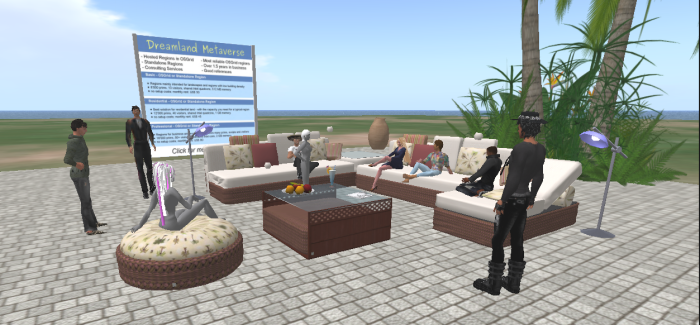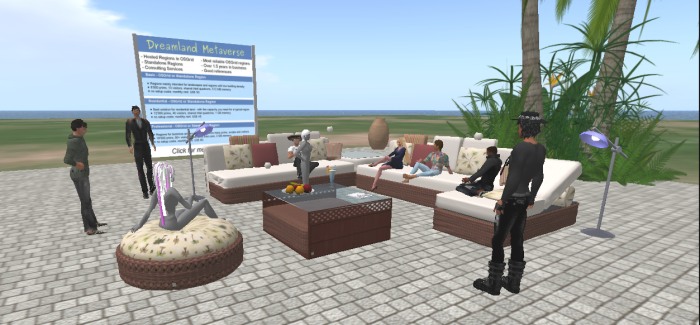
The impending loss of Vivox voice in OpenSim is putting stress on educational institutions and other groups and organizations that need in-world voice.
Vivox was integrated into the viewer and required no additional work on the part of the users.
Other systems, such as Skype or Discord, typically require that users sign into a separate voice platform, in addition to logging into OpenSim.
The problem is that Vivox needs a connector in order to work with OpenSim.
The current integration was developed a decade ago with the cooperation of partners who are no longer part of the project, Unity PR head Ryan Wallace told Hypergrid Business.
As a result, it only supports Vivox version 4, not the current version 5. As Vivox migrates to the new version of the platform, the old connectors will no longer work.
That means that either someone needs to step up and build a new connector, or build an entirely new, open-source, voice system for OpenSim.
One group, the Infinite Metaverse Alliance, plans to do just that, with EchoVoice — but it’s going to cost $65,000.

“We asked for volunteer help from the community for two years without success,” project leader Lisa Laxton told Hypergrid Business.
The group has been working on the project with its own resources, but without full-time developers allocated to it, progress is slow — and time is running out.
As of this writing, the organization has raised $650 of its $65,000 goal on its GoFundMe page.
Project needs unique expertise
The big problem in hiring developers for a project like this is the lack of domain knowledge, said Laxton.
“As with OpenSimulator, there are client and server side components,” she said. “Both are needed and therefore cannot be developed or tested separately.”
The money will be used to pay the salaries of experienced OpenSim developers, she said, who are part of the Infinite Metaverse Alliance team.
“Troy Schultz is the lead developer and designer of the project source code and will be compensated accordingly if sufficient funds are raised,” she said. “Engineering and documentation requires domain knowledge and will be handled by the current team under his direction.”
Schultz has been an OpenSimulator contributor over the years, she said, as well as a contributor on other open-source projects. He is the former owner of Refuge grid, and is the lead admin for the Infinite Metaverse Alliance and Laxton Consulting research and development projects, and is also known as “Seth Nygard” in-world. You can see his LinkedIn profile here.
Laxton herself is a systems engineer with project management experience, and has been CEO of the Infinite Metaverse Alliance for the past five years and president of Laxton Consulting since 2009. You can see her LinkedIn profile here.
Another member of the team is engineer Frank Rulof. You can see his LinkedIn profile here.
Roots in Whisper
The most significant previous OpenSim voice project was Whisper, which was a connector between OpenSim and the Mumble open source voice server. But that project is now several years old and out of date.
I last tried it out in 2010, when there were early signs that it could work — but the free availability of Vivox for OpenSim made Whisper almost completely irrelevant. Plus, unlike Whisper, Vivox didn’t require grids to have a separate voice server for their users — Vivox handled the voice. And although Vivox charges money to its bigger customers, OpenSim grids got the service for free.
According to the Infinite Metaverse Alliance, there is now too much technical debt accrued with the Whisper project for it to be a practical solution going forward.
But the basic idea of Whisper — building a connector between the Mumble voice server and OpenSim — is still a good one.
As with Whisper, the new EchoVoice system will require that grids host and run the Mumble voice server in order to have voice on their grids — or connect to someone who does.
But that could be actually be a plus for some organizations, said Laxton. Schools, health care organizations, and some business use cases may require local voice servers for privacy or compliance reasons.
Hypergrid functionality
EchoVoice will work with all the supported OpenSim viewers without any additional development effort by viewer development teams, said Laxton — and will also work for users hypergrid traveling between grids.
“Without a solution like EchoVoice, users will not be able to easily communicate in voice when traveling the hypergrid because each grid will have its own voice services or none at all,” said Laxton.
EchoVoice’s design will also allow users to automatically switch to Vivox if they’re in a region running either the older V3 and V4 versions of Vivox or the new V5 version.
You can watch a video about the EchoVoice project below:

Source: Hypergrid Business
